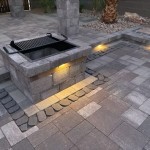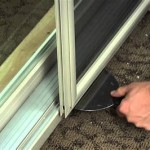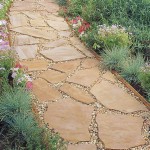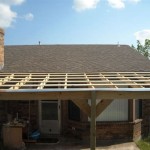How Much Does It Cost To Build A Metal Patio Cover?
Constructing a metal patio cover offers numerous advantages, including durability, low maintenance, and aesthetic appeal. Determining the precise cost of such a project necessitates careful consideration of various factors. This article will explore the diverse elements that influence the final price, providing a comprehensive overview of the expenses involved in building a metal patio cover.
The cost of building a metal patio cover can range significantly, typically falling between $15 and $50 per square foot. This wide range is due to the variability in material types, design complexity, local labor rates, and permit requirements. A simple, freestanding aluminum patio cover will likely reside at the lower end of the spectrum, while a custom-designed steel structure with integrated features may fall at the higher end.
Material Costs: Aluminum vs. Steel
The primary material used in constructing a metal patio cover significantly impacts the overall cost. Aluminum and steel are the most common choices, each possessing distinct characteristics that influence pricing.
Aluminum is a lightweight and corrosion-resistant material, making it ideal for patio covers in various climates. It is generally less expensive than steel, with material costs typically ranging from $5 to $15 per square foot. Aluminum's lightweight nature also translates to easier installation, potentially reducing labor costs. However, aluminum is less strong than steel and may not be suitable for larger spans or areas prone to heavy snow or high winds.
Steel, on the other hand, offers superior strength and durability. Steel patio covers can withstand harsh weather conditions and support heavier loads. The material cost for steel typically ranges from $10 to $30 per square foot, depending on the gauge and type of steel used. While steel is significantly stronger, it is also heavier and more susceptible to corrosion. Therefore, steel patio covers require proper rust-proofing and regular maintenance to ensure longevity. The added weight also contributes to higher labor costs due to the increased difficulty of installation.
Furthermore, the specific type of metal roofing material chosen will play a role. Ribbed metal roofing is a popular and cost-effective option, while standing seam metal roofing offers a more premium and aesthetically pleasing appearance, commanding a higher price. The thickness of the metal, measured in gauge, also impacts the cost. Thicker gauges provide greater durability but are more expensive.
Labor Costs: Installation and Complexity
Labor costs constitute a significant portion of the overall expense of building a metal patio cover. These costs are influenced by several factors, including the complexity of the design, the size of the patio cover, local labor rates, and the experience of the installers.
Simple, freestanding patio covers are relatively straightforward to install, resulting in lower labor costs. However, more complex designs, such as attached patio covers that require integration with the existing structure, or those with intricate rooflines or custom features, will require more skilled labor and increased installation time, thus driving up costs.
Local labor rates vary significantly depending on geographic location and the demand for contractors. Areas with higher cost of living typically have higher labor rates. Obtaining multiple quotes from reputable contractors is essential to ensure a competitive price. It is also crucial to verify the contractor's licensing, insurance, and experience before hiring them for the project. A qualified contractor will be able to accurately assess the project requirements and provide a detailed estimate of labor costs.
Additionally, consider the need for specialized labor. For instance, if the patio cover design requires electrical work for lighting or ceiling fans, hiring a licensed electrician will be necessary. Similarly, if the project involves concrete work for footings or a patio slab, hiring a concrete contractor will add to the overall labor expenses.
Permits, Site Preparation, and Additional Features
Beyond material and labor costs, several other expenses can influence the final price of building a metal patio cover. These include permit fees, site preparation costs, and the addition of optional features.
Obtaining the necessary building permits is a crucial step in the construction process. Permit fees vary depending on the location and the scope of the project. Failing to obtain the required permits can result in fines and delays. The permit process typically involves submitting detailed plans and specifications to the local building department for review and approval. Some locations may also require inspections during and after construction to ensure compliance with building codes.
Site preparation may involve clearing vegetation, leveling the ground, and pouring concrete footings to provide a stable foundation for the patio cover. The extent of site preparation required will depend on the existing conditions of the area. If the ground is uneven or requires significant excavation, site preparation costs can be substantial. Concrete footings are essential for ensuring the structural integrity of the patio cover and preventing settling or movement over time.
Adding optional features to the patio cover can enhance its functionality and aesthetic appeal, but also increase the overall cost. These features may include:
*Lighting:
Installing integrated lighting can provide illumination for evening use and create a more inviting atmosphere. Options range from simple overhead lights to more elaborate recessed lighting or string lights. *Ceiling Fans:
Ceiling fans can provide much-needed air circulation during warm weather, making the patio more comfortable. *Electrical Outlets:
Adding electrical outlets allows for convenient access to power for appliances, electronics, or outdoor entertainment systems. *Screens:
Installing screens can help keep insects out and provide a more enclosed and comfortable space. *Gutters and Downspouts:
Gutters and downspouts help to channel rainwater away from the patio area, preventing water damage and erosion. *Decorative Columns or Posts:
Adding decorative columns or posts can enhance the appearance of the patio cover and complement the existing architecture of the home. *Painting or Powder Coating:
Applying a protective coating such as paint or powder coating can enhance the appearance of the metal and provide added protection against corrosion.Consideration should also be given to potential cost overruns. It is advisable to set aside a contingency fund, typically 5-10% of the total project cost, to cover unexpected expenses that may arise during construction. These could include unforeseen problems with the site, changes to the design, or increases in material costs.
The size of the patio cover directly correlates to the cost. A larger patio cover will require more materials and labor, increasing the overall expense. Carefully consider the desired size and dimensions of the patio cover to ensure it meets your needs without exceeding your budget. It is helpful to measure the area where the patio cover will be installed and create a detailed plan before obtaining quotes from contractors. Remember to account for factors such as furniture placement and traffic flow when determining the appropriate size.
The design of the patio cover plays a significant role in determining the cost. Simple, rectangular designs are generally less expensive than more complex designs with intricate rooflines or custom features. A flat roof is typically the most cost-effective option, while gable or hip roofs can add visual appeal but also increase the cost due to the added complexity of construction.
Another factor to consider is the type of attachment to the existing structure, if applicable. A freestanding patio cover is generally less expensive than an attached patio cover, as it does not require any modifications to the existing building. Attached patio covers require careful integration with the existing roof and walls, which can be more time-consuming and require specialized skills.
In summary, accurately budgeting for a metal patio cover requires a detailed assessment of material costs, labor rates, permit fees, site preparation expenses, and the inclusion of any desired additional features. By carefully considering these factors and obtaining multiple quotes from qualified contractors, homeowners can make informed decisions and ensure that their patio cover project stays within budget.

How Much Does It Cost To Build A Covered Patio Smart Remodeling Llc

Covered Patio Cost To Build Fixr

How Much Does It Cost To Build A Covered Patio Smart Remodeling Llc

How Much Do Covered Patio Costs In 2024 Forbes Home

How Much Does It Cost To Build A Roof Over My Deck Or Patio In Colorado

How Much Does It Cost To Build A Roof Over My Deck Or Patio In Colorado

Cost To Build A Roof Over Patio Or Deck 2024

Diy Alumawood Patio Cover Kits Shipped Nationwide

Building A Covered Patio With 30ft Span The Awesome Orange

How Much Does Adding A Roof Over Patio Cost 2024 Today S Homeowner








